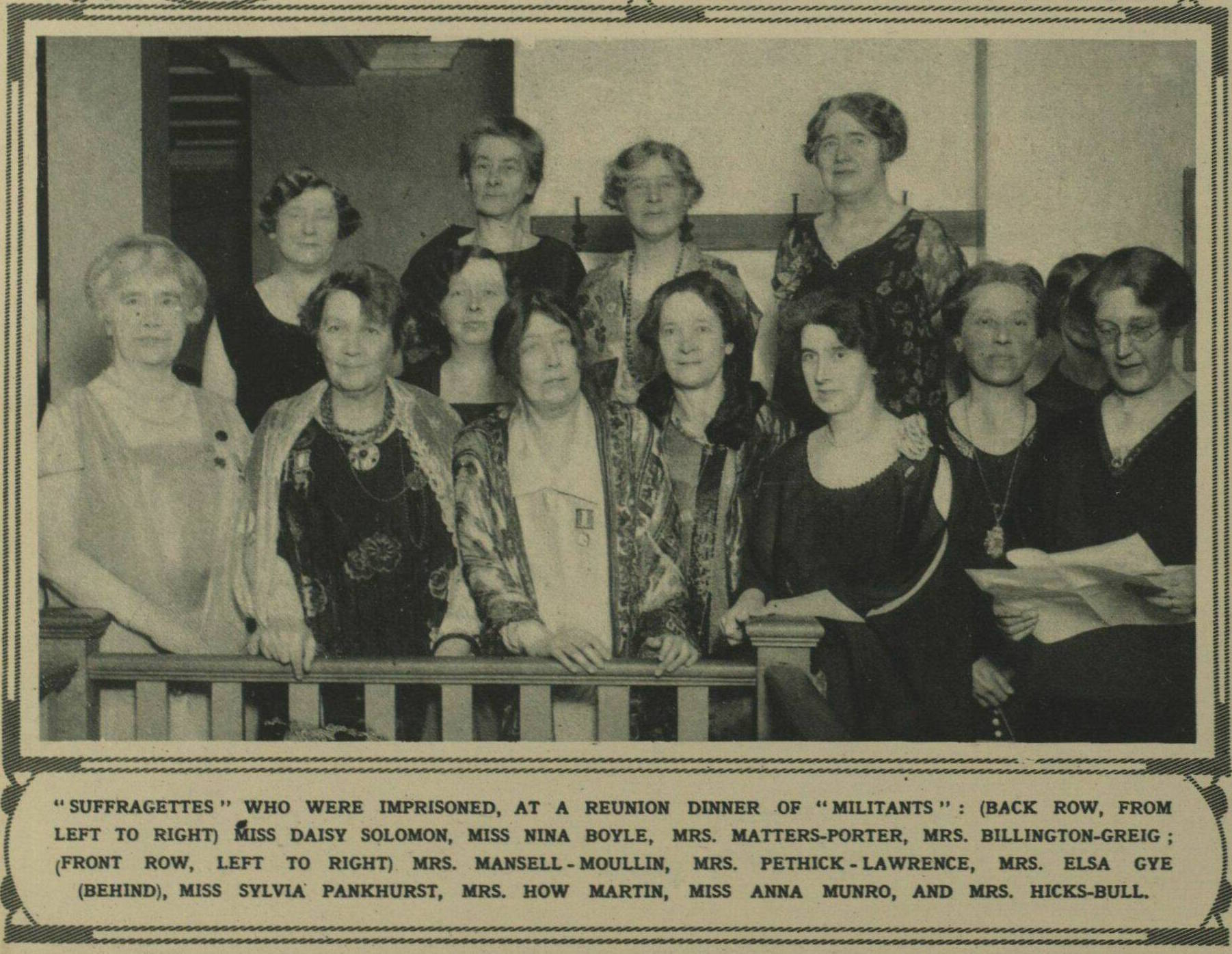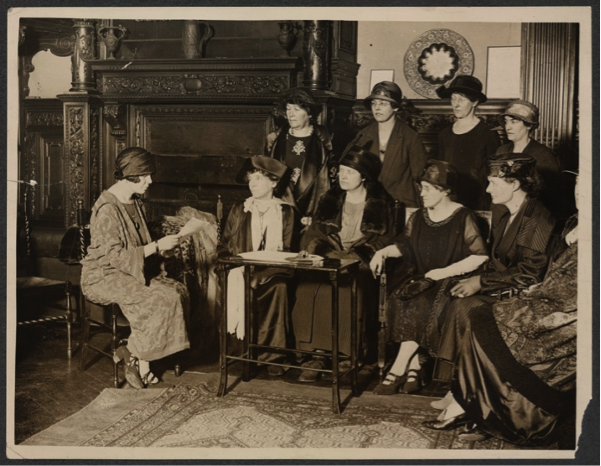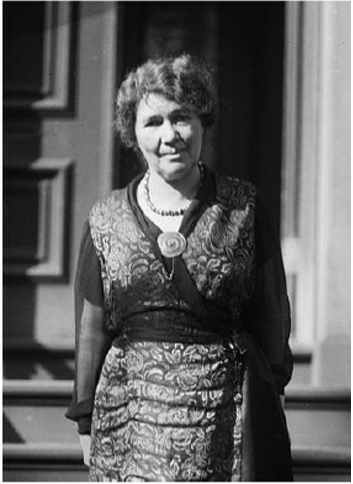

Husband Frederick Pethick-Lawrence, 1st Baron Pethick-Lawrence
Queer Places:
(1901)
3 and 4 Clement's Inn, Holborn, London WC2A 2AZ
"The
Mascot", Holmwood, Surrey
(1917) 11 and 12 Old Square, Lincoln's Inn,
London WC
(1920) "Fourways", Peaslake, Surrey
20 Charlotte St, Bristol BS1 5PZ
.jpg) Emmeline
Pethick-Lawrence, Lady Pethick-Lawrence (21 October 1867 – 11 March 1954)[1]
was a British women's rights activist and suffragette. Her name and picture (and those of 58 other women
and men's suffrage supporters)
are on the
plinth of the
statue of
Millicent Fawcett in
Parliament Square, London, unveiled in 2018.
Emmeline
Pethick-Lawrence, Lady Pethick-Lawrence (21 October 1867 – 11 March 1954)[1]
was a British women's rights activist and suffragette. Her name and picture (and those of 58 other women
and men's suffrage supporters)
are on the
plinth of the
statue of
Millicent Fawcett in
Parliament Square, London, unveiled in 2018.
Lady Pethick-Lawrence was born in Bristol. Her father was a businessman.She was the second of 13 children, and was sent away to boarding school at the age of eight.
From 1891 until 1895 Pethick worked as a "sister of the people" for the West London Mission at Cleveland Hall, near Fitzroy Square. She helped Mary Neal run a girls' club at the mission. In the autumn of 1895 she and Mary Neal left the mission to co-found the Espérance Club, a club for young women and girls that would not be subject to the constraints of the mission, and could experiment with dance and drama.[2] Pethick also started Maison Espérance, a dressmaking cooperative with a minimum wage, an eight-hour day and a holiday scheme.
Pethick married Frederick Lawrence in 1901 after he changed his political views to be more Liberal. The couple took the joint name Pethick-Lawrence and kept separate bank accounts to give them autonomy.[3]
Pethick-Lawrence was a member of the Suffrage Society and was introduced to Emmeline Pankhurst in 1906. She became treasurer of the Women's Social and Political Union (WSPU), which Pankurst had founded in 1903, and raised £134,000 over six years.[4] Pethick-Lawrence attended a number of events with Pankhurst including the aborted visit to the Prime Minister in late June 1908, along with Jessie Stephenson, Florence Haig, Maud Joachim and Mary Phillips after which there was some violent treatment of women protestors, and a number of arrests[5].


Seated at the far left is Alice Paul conferring. Left to Right – Seated – Alice Paul, Elizabeth Robins, Viscountess Rhondda, Dr. Louisa Martindale, Mrs. Virginia Crawford, Dorothy Evans – Standing – Mrs. Pethick-Lawrence, Alison Neilans, Florence Underwood, Miss Barry.

Pethick-Lawrence founded the publication Votes for Women with her husband in 1907. The couple was arrested and imprisoned in 1912 for conspiracy following demonstrations that involved breaking windows, even though they had disagreed with that form of action. After being released from prison, the Pethick-Lawrences were unceremoniously ousted from the WSPU by Emmeline Pankhurst and her daughter Christabel, because of their ongoing disagreement over the more radical forms of activism that the Pethick-Lawrences opposed. They then joined the United Suffragists.[4]
Crystal Eastman reputation as a political campaigner grew and in 1913 she became investigating attorney for the U.S.Commission on Industrial Relations. Later that year Eastman was a delegate to the Seventh Congress of the International Woman Suffrage Alliance in Budapest. During the conference Eastman met Aletta Jacobs (Holland), Emmeline Pethick-Lawrence (England) and Rosika Schwimmer (Hungary).
Eleanor Rathbone, Nina Boyle, Marian Reeves, Elsa Gye, Winifred Holtby, Alison Neilans, Edith Craig, Sylvia Pankhurst, and Emmeline Pethick-Lawrence were among the feminists who shared membership in the Myra Sadd Brown Memorial Library, which suggests that these women held similar intellectual, political and literary interests.
Beginning of the 1920s Emily Greene Balch lived and worked at the Maison International in Rue du Vieux Collège in Geneva, on and off, for 12 years. During a Zürich meeting, she received a cable terminating her 20-year-long academic job at Wellesley College, on the grounds that she had been employed ‘to teach economics, not pacifism’. Left with no means of support and no pension at the age of 52, Balch had celebrated her dismissal by smoking a cigarette with Emmeline Pethick-Lawrence and the American lawyer Madeleine Doty; along with its dislike of independent women, Wellesley had a strict taboo on smoking.
In 1938 Pethick-Lawrence published her memoirs, which discuss the radicalization of the suffrage movement just before the First World War.[6] She was involved in the setting up of the Suffragette Fellowship with Edith How-Martyn to document the movement. [7]
In 1945, she became Lady Pethick-Lawrence when her husband was made a baron.[8]
My published books: